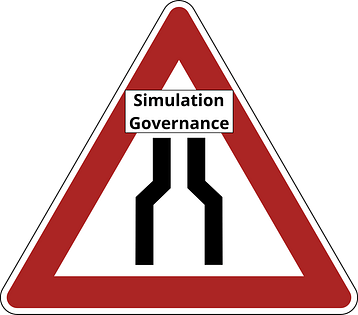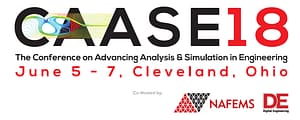SAINT LOUIS, MISSOURI – October 2, 2019

ESRD Chairman and Co-Founder Dr. Barna Szabó
The idea of simulation governance is easy to understand: The application of numerical simulation technology must be properly governed in every organization. The responsibility for simulation governance rests with board-level executives. They exercise this responsibility through setting the goals, objectives and metrics to ensure that the economic value of numerical simulation is positive. If numerical simulation is not managed properly then it can and often does lead to poor decisions that result in economic loss. There are many well-documented examples of substantial economic loss that can be attributed to lack of simulation governance and management.
Recognizing the need to clarify the issues associated with the governance and management of numerical simulation, the Simulation Governance and Management Working Group of NAFEMS[1] has undertaken to develop a document on “What is Simulation Governance and Management”. An extract was published in the July 2019 issue of the NAFEMS quarterly Benchmark.

Beware the bottlenecks preventing the adoption of simulation governance.
While the concept is easily grasped, the existence of two bottlenecks must be recognized: The first is that board-level executives generally lack the expertise to properly formulate realistic policies, expectations and metrics for numerical simulation and to assess the economic risks associated with numerical simulation activities within their organization. Therefore it is necessary to engage outside consultants who have proper credentials and experience. The problem is that it is extremely difficult to find consultants who are competent in this area. This is because there are very few experts in numerical simulation and the consultant must also understand the intricacies of corporate change management.
The second bottleneck is that, with very rare exceptions, the technical staff do not have a clear understanding of what numerical simulation is. There are historical reasons for this: The primary tool of numerical simulation is the finite element method. The legacy finite element codes, whose origins can be traced to the 1960’s and 70’s, were not designed to support numerical simulation. In fact, numerical simulation, as the term is understood today, did not yet exist at that time.
An essential aspect of numerical simulation is that mathematical models must be formulated independently from how the numerical solution is obtained. In contrast, legacy finite element software tools have the model definition and approximation conflated in their element libraries, making it very difficult, at times impossible, to separate model form errors from numerical approximation errors. As a consequence, solution verification and model validation, which are essential elements of numerical simulation, cannot be reliably performed.
To eliminate this bottleneck it will be necessary to re-train the technical staff so that they will become proficient in the use of quality assurance procedures in numerical simulation.
Management should also seek professional advice on the benefits and risks associated with Democratization of Simulation which must be subject to the rules of simulation governance. The term means that numerical simulation tools are made available to engineers who do not have expertise in numerical simulation. The goal is to increase productivity without sacrificing reliability through standardization of recurring numerical simulation tasks. These tools must be carefully designed, tested and certified by experts for safe and efficient use.
The reasons why democratization tools should not be deployed without meeting the technical requirements of simulation governance are outlined in a 2018 presentation as well as in a joint webinar hosted by ESRD & Revolution in Simulation.
[1] NAFEMS is the International Association for the Engineering Modelling, Analysis and Simulation Community. The parent organization was the National Agency for Finite Element Methods and Standards, established in the UK in 1983 with the objective to promote the safe and reliable use of finite element and related technology.
References
NASA Standard 7009: This NASA Technical Standard provides an approved set of requirements, recommendations, and criteria with which models and simulations (M&S) may be developed, accepted, and used in support of NASA activities.
Szabó B and Actis R. Simulation governance: Technical requirements for mechanical design. Computer Methods in Applied Mechanics and Engineering. 249-252, 158-168, 2012.
 Serving the Numerical Simulation community since 1989
Serving the Numerical Simulation community since 1989 










Leave a Reply
We appreciate your feedback!
You must be logged in to post a comment.